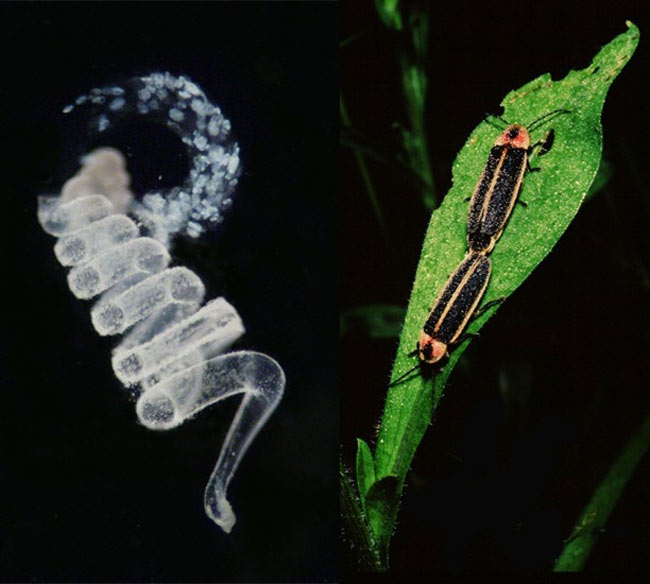The Deceptive Nature of Firefly Love

New research finds that females of the firefly species Photinus ignitus choose males based on flash pattern in their taillights. A long burning flash means the male can offer a high quality nuptial gift – a sperm package high in nutrients.
"Females that receive high quality nuptial gifts lay lots more eggs," Tufts University firefly researcher Sara Lewis told LiveScience. "So there is a benefit for females that choose one of these males."
But males of a related species, Photinus greeni, may not be so honest. The greeni males with the most desirable flash pattern do not provide the best nuptial gift.
"The question now is whether the males are being purposely dishonest or signaling something else," Lewis said. "Females definitely notice the variation. They're still being choosey"
Male fireflies are built to mate – basically their whole anatomy is dedicated to producing the sperm package. Making a good sperm package requires loads of energy, and most males can only produce about 10 in their short lifetime. The entire purpose of a male firefly's life is to mate, pretty much with any female that will accept them.
But female fireflies need to be choosey – they only live for two weeks in their adult stage and need to make those two weeks count. The small window of time is like firefly spring break – females will mate with multiple males and lay about 100 eggs.
If the greeni females aren't choosing based on signals indicating quality of the sperm package, which also contains proteins that will provide nutrients for her eggs, then what are they selecting for?
Sign up for the Live Science daily newsletter now
Get the world’s most fascinating discoveries delivered straight to your inbox.
"One possibility is that greeni females are not as concerned about the nuptial gift but more concerned about male genetic quality," Lewis said. "Maybe males with certain flash patterns have good genes."
Lewis is currently looking into whether there is sperm competition in fireflies – whether female fireflies can choose not only which males to mate with, but which males she will actually allow to fertilize her eggs.
This research, which the National Science Foundation partly funds, may further our understanding of human communication, signal evolution, and biomedicine.
Related Stories










